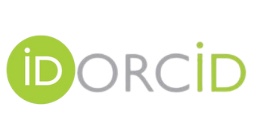Angina de pecho e infarto agudo del miocardio
Palabras clave:
infarto del miocardio, angina pectoris, adultoResumen
Se revisaron las historias clínicas de los pacientes ingresados en la Unidad de Cuidados Intensivos de Adultos, con los diagnósticos de Angina Inestable Aguda y de Infarto Agudo del Miocardio ,desde enero del 2003 hasta enero del 2004 en el Hospital General Docente “Leopoldito Martínez”, con el objetivo de confirmar los diagnósticos evolutivos de ambas entidades. El sexo masculino con un 70%, la raza blanca con un 85.7% y la edad mayor de 71 años con 34.2%, fueron los grupos más representativos. El diagnóstico al ingreso más frecuente fue el Infarto Agudo del Miocardio con un 65.7% de los pacientes, de los cuales no recibieron tratamiento trombolítico el 54.3%. El diagnóstico de Angina fue el que más variaciones presentó de manera evolutiva. Topográficamente el infarto de cara anterior fue el más frecuente con un total de 15 pacientes y dentro de las causas que impidieron realizar la trombolísis de estos pacientes fue el diagnóstico tardío ( más de 12 horas de presentar síntomas ) la que reunió el mayor número de pacientes.
Descargas
Citas
Fuster V, Badimon L, Badimon JJ. The pathogenesis of coronary artery disease and the acute coronary syndromes: parts 1 y 2. N Engl J Med 1992; 326:242-250, 310-318.
WHO MONICA Project. Myocardial infarction and coronary deaths in the World Health Organization MONICA project. Circulation. 1994; 90: 583-612.
Armstrong A, Duncan B, Oliver MF. Natural history of acute heart attacks: a community study. Br Heart J 1972; 34:67-80.
Dellborg M, Eriksson P, Riha M, Swedberg K. Declining hospital mortality in acute myocardial infarction. Eur Heart J 1994; 15:5-9.
Norris RM, Caughey OE, Mercer CJ, Scott PJ. Prognosis after myocardial infarction: six year follow-up. Br Heart J 1974; 36: 786-90.
Lee KL, Woodlief LH, Topol EJ. Predictors of 30-day mortality in the era of reperfusion for acute myocardial infarction: results from an international trial of 41021 patients. Circulation. 1995; 91:1659-68.
Grijseels EWM, Deckers JW, Hoes AW. Pre-hospital triage of patients with suspected acute myocardial infarction. Eur Heart J 1995; 16: 325-32.
Gore JM, Sloan M, Price TR, Young Raandall AM; Bovill E, Collen D, et al. Intracerebral haemorrhage, cerebral infarction, and subdural haematoma after acute myocardial infarction and thrombolytic therapy in the thrombolysis in myocardial infarction study. Circulation. 1991; 83:448-59.
The TIMI Study Group. Comparison of invasive and conservative strategies after treatment with intravenous tissue plasminogen activator in acute myocardial infarction: results of the thrombolysis in myocardial infarction (TIMI) phase II trial. N Engl J Med 1989; 320:618-27.
Simoons ML, Arnold A. Tailored thrombolytic therapy: a perspective. Circulation. 1993; 88:2556-64.
Simoons ML. Individual risk assessment for intracranial haemorrhage during thrombolytic therapy. Lancet. 1993; 342: 1523-28.
Ryan TJ. ACC/AHA Guidelines for the management of patients with acute myocardial infarction. JACC 1996; 28 (5):1328-428.
The GUSTO Investigators. An randomized trial comprising four thrombolytic strategies for acute myocardial infarction. N Engl J Med 1993; 329:673-82.
Shaer DH, Leiboff RH, Katz RJ. Recurrent early ischemic events after thrombolysis for acute myocardial infarction. Am J Cardiol 1987; 59:788-92
Antman EM. General hospital management. En: Julian DG, Braunwald E, editors. Management of acute myocardial infarction. London: WB Saunders;1994.p.42-4.
Ohman EM, Califf RM, Topol EJ. Consequences of reocclusion after successful reperfusion therapy in acute myocardial infarction: the TAMI Study Group.Circulation.1990;82:781-91.
Wood MA de, Spores J, NotsKe R. Prevalence of total coronary occlusion during the early hours of transmural myocardial infarction. N Engl J Med 1980; 303:897-902
Dacanay S, Kennedy HL, Uretz E. Morphological and quantitative angiographic analyses of progression of coronary stenosis: a comparison of Q-wave and non-Q-wave myocardial infarction. Circulation. 1994; 90:1739-46.
Cannom DS, Levy W, Cohen LS. The short- and long-term prognosis of patients with transmural and non transmural myocardial infarction. Am J Med.1976;61:452-8.














